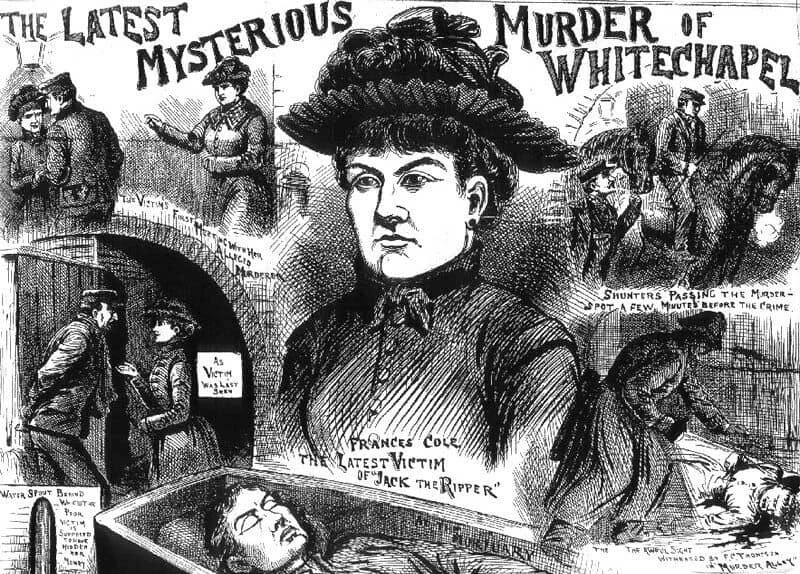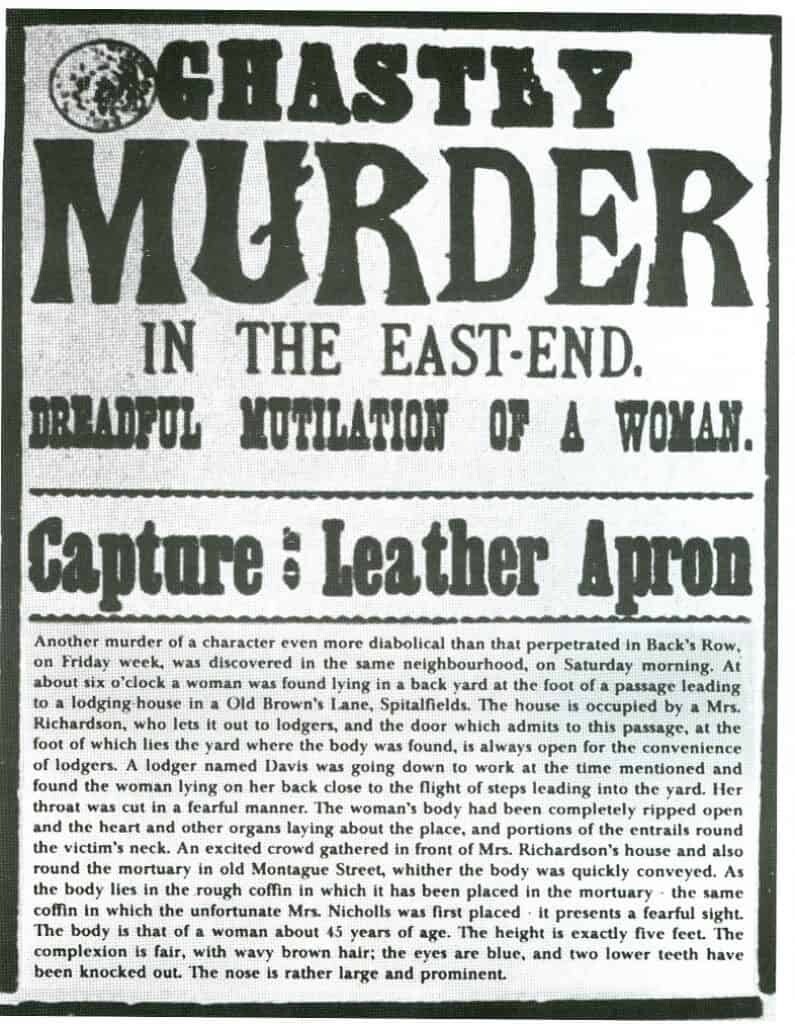How a Brutal Serial Murderer Became a Notorious Star
Residents of Victorian Whitechapel had to contend with the same limitations as the remainder of Victorian London. There was one major factor that worked against them, however. Many of the residents there were hard-up and had more of a battle on their hands than just poverty. A shortage of wealth led to higher than normal acts of crime, many of which were violent in nature. Reaching the fifth birthday in this squalid corner of London was an achievement that 20 percent of children never managed to do. And to make matters even worse, a heinous serial murderer was lurking in the shadows who would become known as Jack the Ripper.

You May Also Like: Gao Chengyong: China’s Jack the Ripper
Crime-Ridden East End of London
The threat of violence was never far away and the dimly lit streets didn’t inspire many to venture out after night fell. The majority of those that were out after ten were up to no good. The gas-powered lighting was barely adequate to illuminate the rabbit warren nature of the alleyways leading off from many streets. The East End of London was a magnet for any enterprising criminal of the time, more than willing and eager to exploit the poor woman who had to sell herself just for to earn quick cash for basics such as bread.
It was in these harsh conditions that prompted even dignitaries such as George Bernard Shaw to dedicated one of his well-known letters to the so-called Blood Money to Whitechapel. In it, he famously describes how an independent genius has taken matters into his own hands whilst the multitude did little more than look on and occasionally deride from quite some distance away. This Independent Genius was someone known by many names, but one captures his identity far better than any of the others. Even to this day, 130 years on, his true identity is not known. He is known the world over by the pseudonym Jack the Ripper.
The Up and Coming Jack the Ripper
Violent street crime was nothing new of course, but it took a quite sensational introduction to a relatively short killing spree to announce to the watching world that Jack had arrived. By his own standards though, the attack on Mary Ann Nichols was almost reserved. Brutal by many standards but Jack was barely getting started. Within 30 minutes of a pair of police constables passing on their beats, and seeing nothing of note, Jack’s first canonical victim was found. Someone had cut the poor woman’s throat twice without so much as a sound and fled the scene undetected.
Related: Were There Multiple Jack the Rippers
Worse was to follow mere weeks later. This time the victim, Annie Chapman, was seen seconds before death in the company of her murderer at the site of her death. The witness did not see the man’s face, as he had his back to her, but a proposition was overheard. This took place outside of 29 Hanbury Street. A neighbor from one door down was outside in his backyard several minutes after when something nudged the modest fence from beyond. He saw nothing, didn’t even consider peeking over the fence, but heard a feminine voice begging towards someone “No!” No other residents reported anything out of the ordinary.

The Frenzy of a Madman
Panic was beginning to take root not just in and around Whitechapel, but across London as a whole. Jack the Ripper was rapidly becoming the most talked about and feared subject throughout that September. This frenzied madman had even spawned a new style of reporting – the tabloid newspaper. Several fledgling newspapers drastically wrote up what was taking place under the premise of ‘look what is happening here!’ A tactic that worked well, probably too well. Vigilante gangs formed and roamed the streets, likely causing more harm than good. Jack wasn’t just another psychopath stalking the streets looking to satiate his growing bloodlust; he was a tabloid celebrity – an anti-hero that was well on his way to becoming a symbol of change.
Related: Other Victims of Jack the Ripper
The Double Event
But this man still had work to do. At the end of September, he excelled himself with not one, but two slayings. The consensus generally accepted was a pair of murders known as the Double Event. Elizabeth Stride was found at 1 am without any signs of the trademark mutilations associated with the maniac. Most just reckon that the horse of Louis Diemschutz was the wrong animal in the wrong place at the right time. Not to be denied, Jack headed west and beyond the boundaries of his familiar Whitechapel district. Now he was inside the City of London. Within 45 minutes of being released from the local police station, Catherine Eddowes was found disemboweled on Mitre Square about a quarter of an hour after a constable on the beat had strolled through it.
For six weeks Jack fell silent. However, it was during this time that he must have got a significant boost to his ego when Sir Charles Warren, then head of the Metropolitan Police, resigned his post in as a direct consequence of his perceived failure to do anything about the Ripper. Maybe his appetite was satisfied by this moment and lived off of it for several weeks, or perhaps he was just biding his time for his Grand Finale – a final act that would send shockwaves throughout the entire world for decades and centuries to come and certainly cement his moniker for eternity.
Jack Takes His Slaying Indoors
Up until now, Jack had always worked outdoors. Now was the time he took his murderous rampage inside. Able to close a door on his activities, he no longer had to concern himself about being seen by anyone that had no right to interfere. He could relax and take his time. This is what he did with poor Mary Kelly. By the time he had finished and left, there was virtually nothing left of the young Irish woman. Jack had gone out in a blaze of glory and firmly put his moniker in the history books. From that moment to this, everyone was asking the same question: who did it?
Whoever did it must have been either the most fortunate or cunning of all serial killers. Some of Jack’s abilities seemingly border on the supernatural. How could Jack the Ripper manage to commit two heinous crimes within one hour of each other, the worst within minutes, in the dark without being seen or without being caught by two different police forces that were only too aware of his presence? That can only be attributed to more than mere luck or good fortune.
Sources:
Casebook pulled 25th October 2015